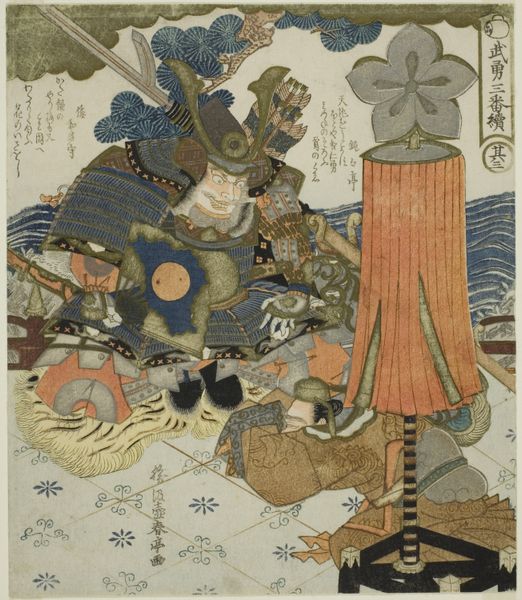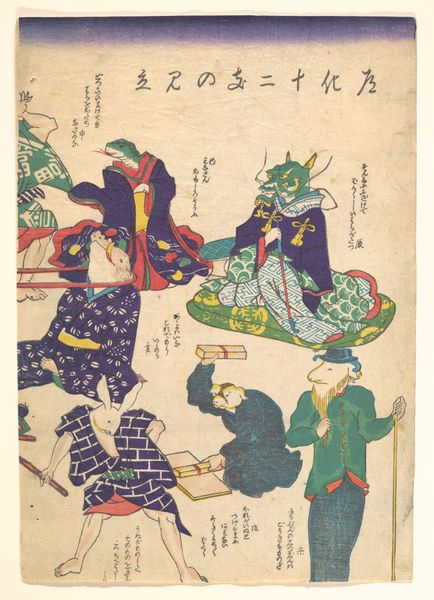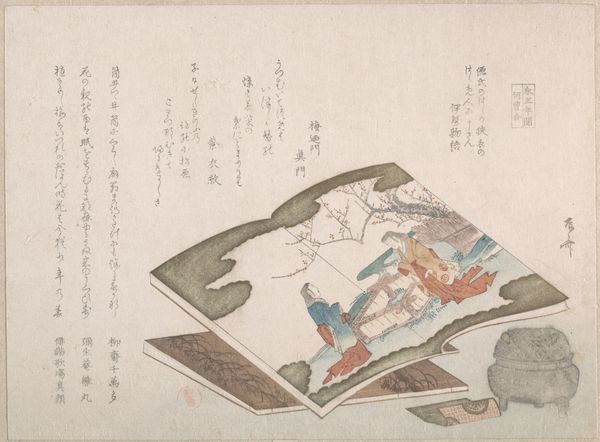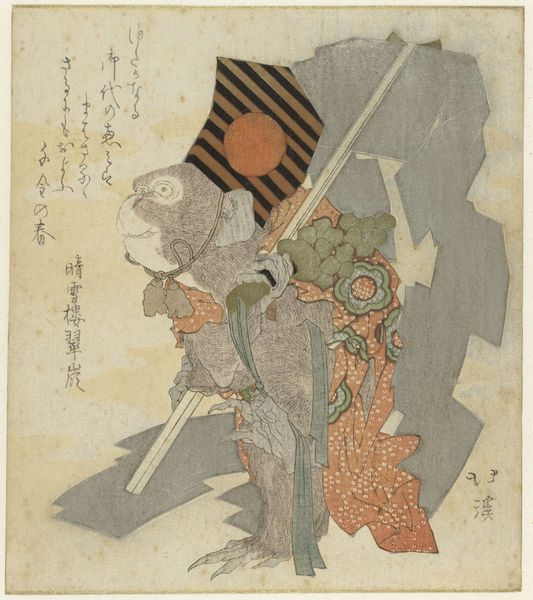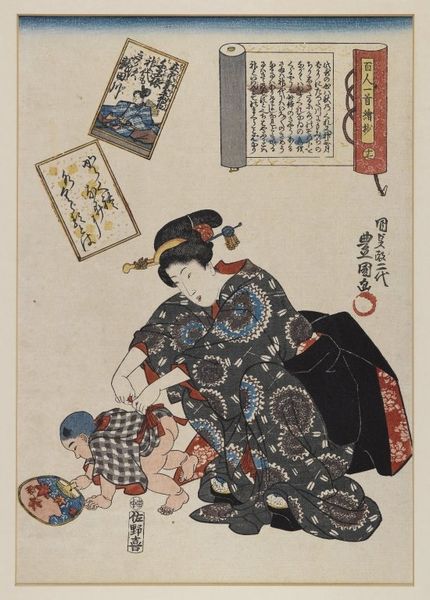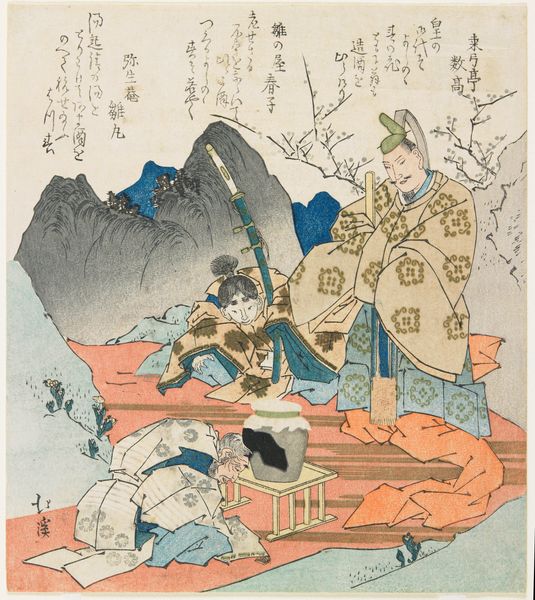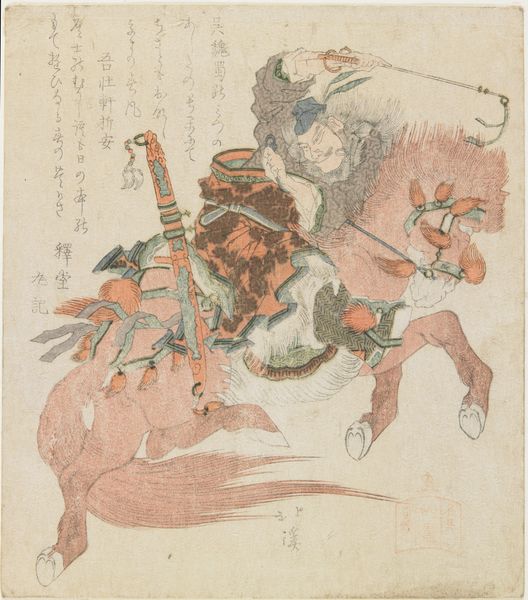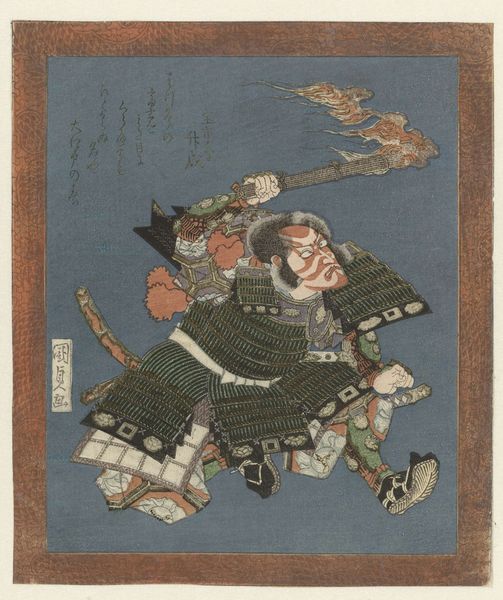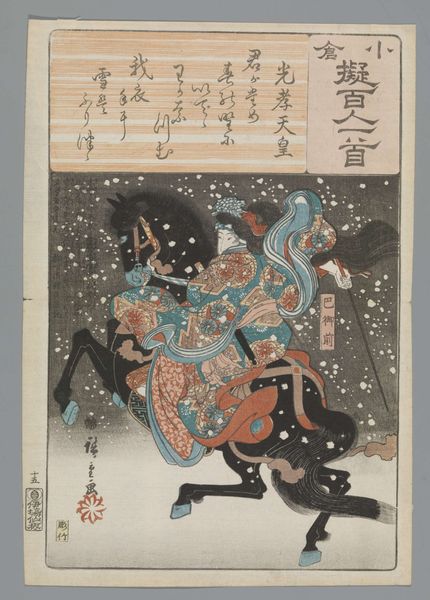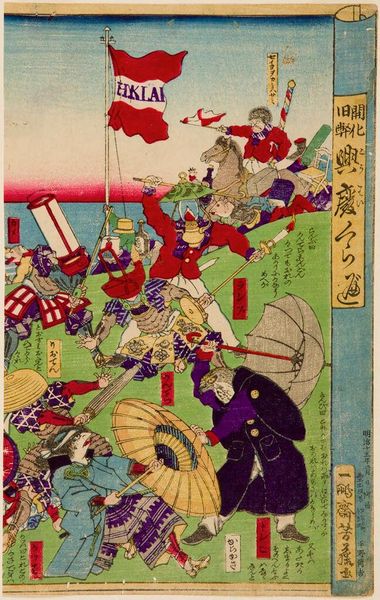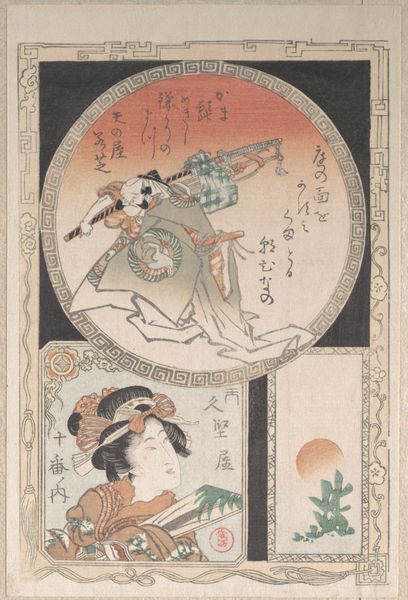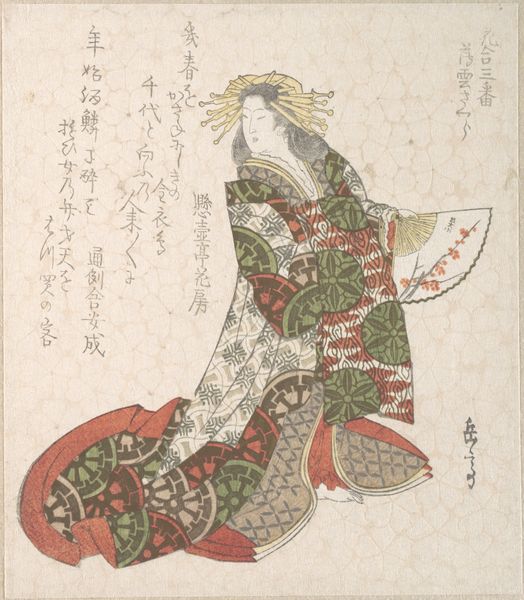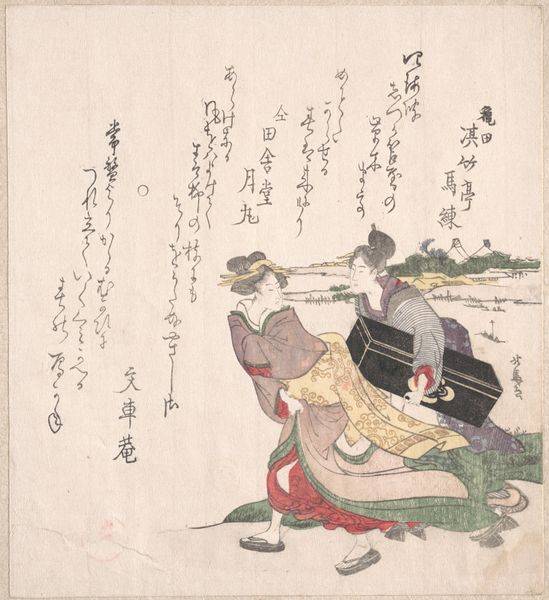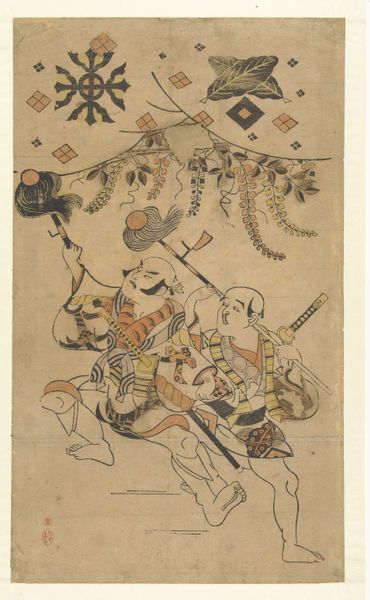
print, watercolor, ink
#
narrative-art
#
ink painting
# print
#
asian-art
#
ukiyo-e
#
figuration
#
watercolor
#
ink
#
watercolor
Dimensions: 7 13/16 x 6 3/4 in. (19.9 x 17.1 cm) (image, sheet)17 15/16 x 14 in. (45.5 x 35.5 cm) (mat, Size I)
Copyright: Public Domain
Editor: So, here we have Utagawa Kuninao's "Sun Wukong Exhaling Manzai Performers," from 1836, currently residing at the Minneapolis Institute of Art. It’s a woodblock print, I think, and it feels… unexpected. Sort of dreamlike, the way these tiny figures seem to just pour out of Sun Wukong’s mouth. What leaps out at you? Curator: It's a wild, wonderful image, isn’t it? It whispers tales of mischievous monkeys, mischievous spirits, exhaling not smoke, but entire worlds! Kuninao is playfully twisting familiar stories – imagine Sun Wukong, the trickster monkey king, deciding to manifest performers. The smallness of the exhaled figures juxtaposed with Wukong's grounded pose – he seems like a mountain himself – it’s humorous! Is he proud? Bored? Or is it all a cosmic joke? Editor: A cosmic joke, I like that. The cloud shape framing the scene, almost like a thought bubble... So, Manzai performers, are they important here, culturally? Curator: Absolutely! Manzai is a traditional Japanese comedy duo, and placing them within this fantastical scene adds a layer of social commentary, don't you think? A kind of joyful disruption of the established order? The text adds another layer—it’s calligraphy; could it be part of the performance itself? Perhaps it speaks to the ephemeral nature of performance and stories. Editor: The ephemeral nature...that connects really nicely with the 'exhaled' quality of the performers, like a breath. Curator: Yes! And thinking about that, where do stories go when they’re no longer told? Are they simply re-absorbed? It tickles the imagination, doesn’t it? Editor: It does! I initially saw a slightly odd composition, but now it feels much more dynamic, more layered. I definitely have a lot more to ponder now. Curator: That's the beauty of it! Sometimes the most whimsical images have the deepest roots. And the wildest branches.
Comments
minneapolisinstituteofart almost 2 years ago
⋮
The monkey Sun Wukong is a character in the epic Chinese novel Xiyouji (Journey to the West), written in the late 16th century. Based on the travel diary of the famous Chinese monk Xuanzang, who traveled to India to study Buddhism, the novel is a fictionalized version of the monk’s long and difficult pilgrimage. One of three creatures sent by the Buddha to protect Xuanzang on the journey, Sun Wukong has the magical ability to replicate himself. In the story, he stuffs a clump of his own fur into his mouth and exhales, and the airborne hairs transform into miniature versions of himself. Instead of thousands of Wukong replicas appearing in the exhaled breath, Kuninao pictured two shadowy figures dressed as manzai performers. Manzai (literally, “ten thousand ages”) is an auspicious and comical dance-and-song routine performed at New Year’s by two entertainers as a means of bestowing blessings on the community. Two poems inscribed in the square cartouche strike a celebratory note. The sun is so glittering on this spring day that its light could reach the Chinese capital. How auspicious is this New Year!Let’s enjoy the elegant dance of manzai performers. May Japan last for ten thousand years. Morinoya Kiyokage As blown from the monkey’s mouththe puff produced something different, something more amusing than clones. Here they are the manzai performers, completely appropriate for this spring day. Fukuhō Arimi
Join the conversation
Join millions of artists and users on Artera today and experience the ultimate creative platform.
